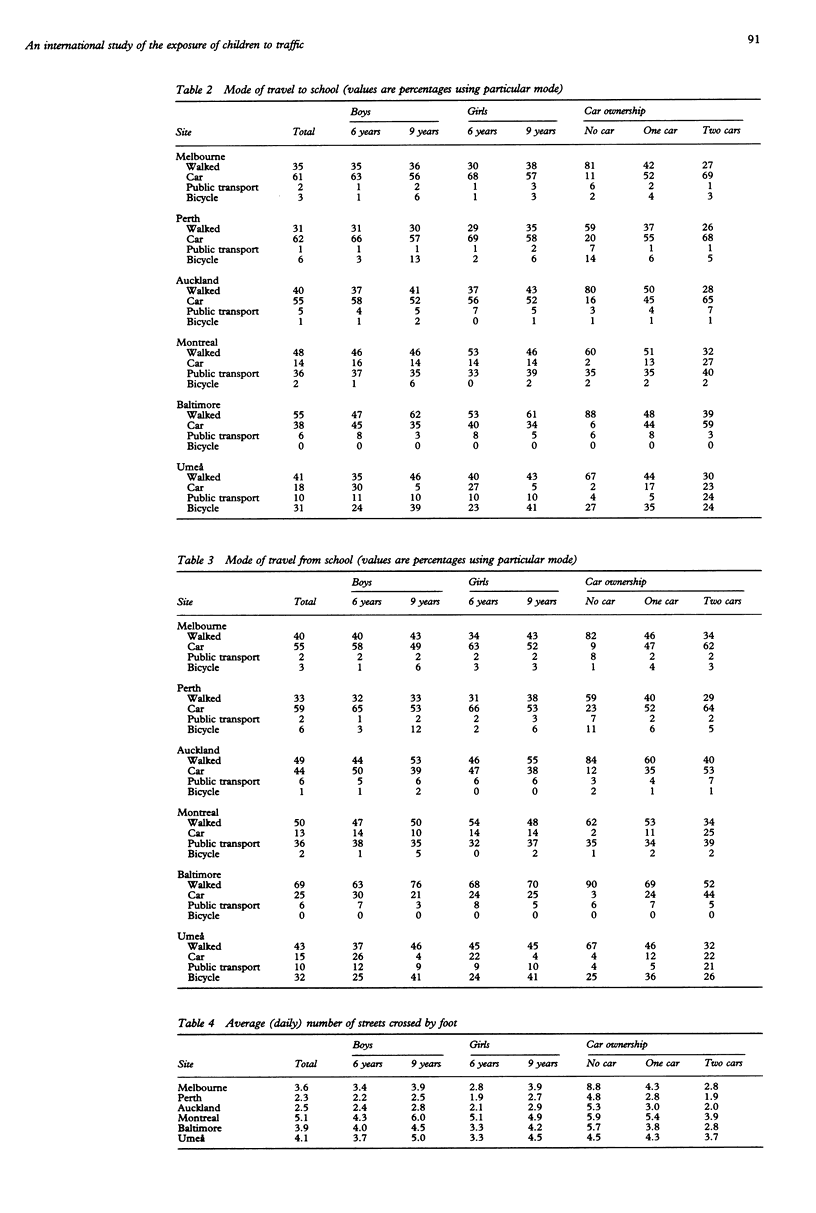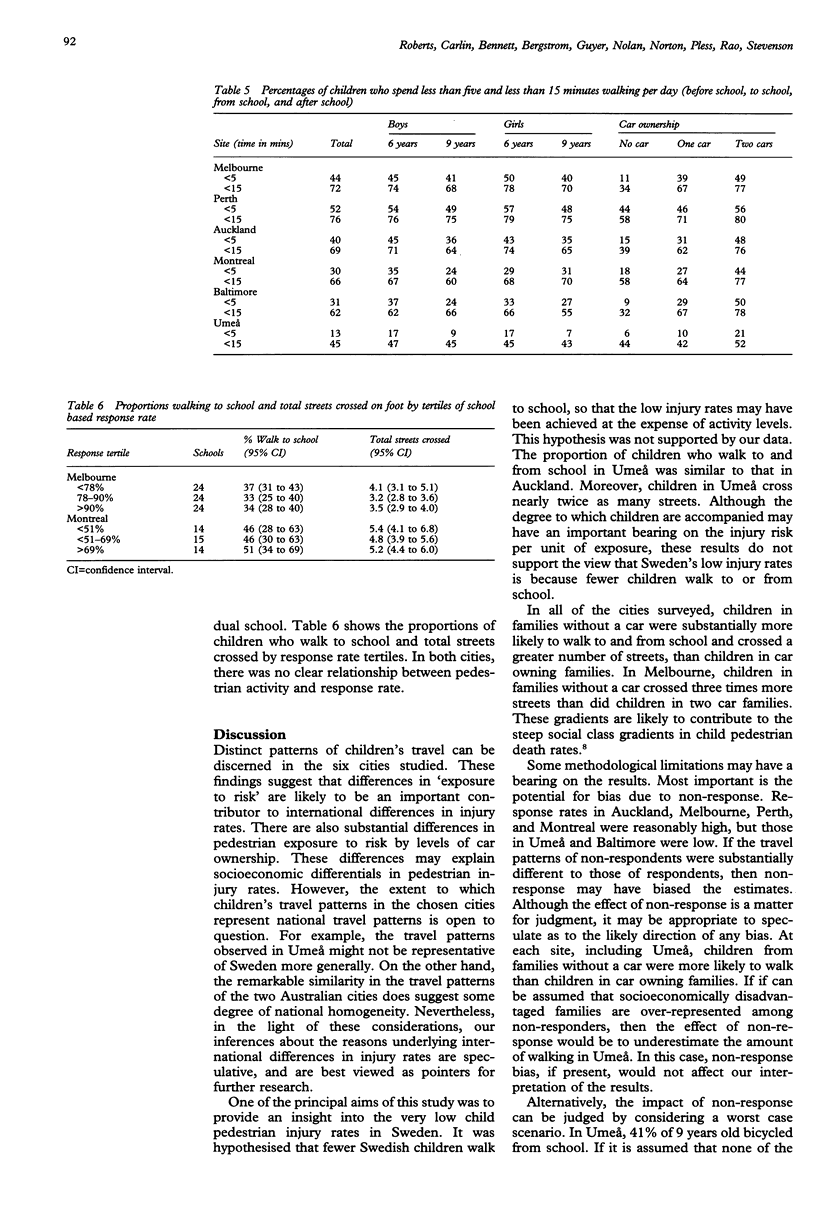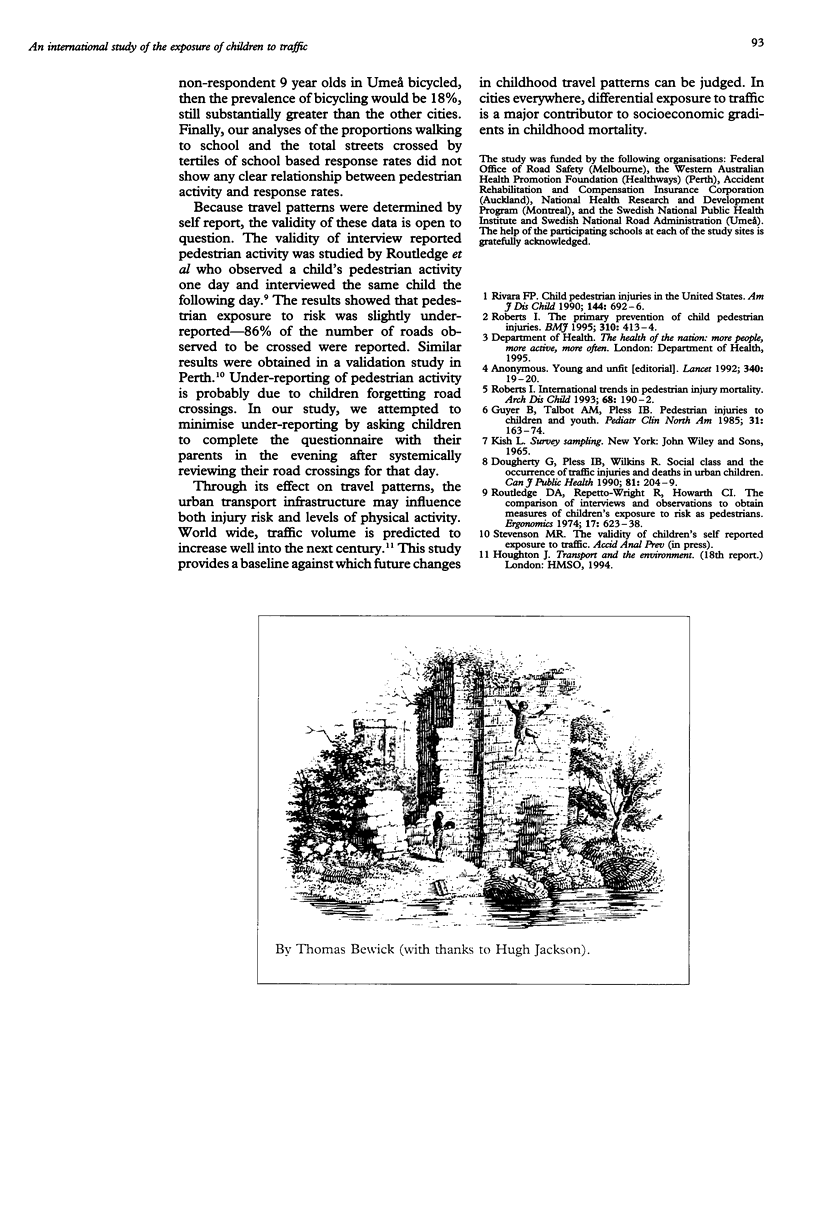Abstract
OBJECTIVES: To examine the extent of international differences in children's exposure to traffic as pedestrians or bicyclists. DESIGN: Children's travel patterns were surveyed using a parent-child administered questionnaire. Children were sampled via primary schools, using a probability cluster sampling design. SETTING: Six cities in five countries: Melbourne and Perth (Australia), Montreal (Canada), Auckland (New Zealand), Umeå (Sweden), and Baltimore (USA). SUBJECTS: Children aged 6 and 9 years. MAIN OUTCOME MEASURES: Modes of travel on the school-home journey, total daily time spent walking, and the average daily number of roads crossed. MAIN FINDINGS: Responses were obtained from the parents of 13423 children. There are distinct patterns of children's travel in the six cities studied. Children's travel in the three Australasian cities, Melbourne, Perth and Auckland, is characterised by high car use, low levels of bicycling, and a steep decline in walking with increasing car ownership. In these cities, over a third of the children sampled spent less than five minutes walking per day. In Montreal, walking and public transport were the most common modes of travel. In Umeå, walking and bicycling predominated, with very low use of motorised transport. In comparison with children in the Australasian and North American cities, children in Umeå spend more time walking, with 87% of children walking for more than five minutes per day. CONCLUSIONS: There are large international differences in the extent to which children walk and cycle. These findings would suggest that differences in 'exposure to risk' may be an important contributor to international differences in pedestrian injury rates. There are also substantial differences in pedestrian exposure to risk by levels of car ownership-differences that may explain socioeconomic differentials in pedestrian injury rates.
Full text
PDF




Selected References
These references are in PubMed. This may not be the complete list of references from this article.
- Dougherty G., Pless I. B., Wilkins R. Social class and the occurrence of traffic injuries and deaths in urban children. Can J Public Health. 1990 May-Jun;81(3):204–209. [PubMed] [Google Scholar]
- Guyer B., Talbot A. M., Pless I. B. Pedestrian injuries to children and youth. Pediatr Clin North Am. 1985 Feb;32(1):163–174. doi: 10.1016/s0031-3955(16)34764-2. [DOI] [PubMed] [Google Scholar]
- Rivara F. P. Child pedestrian injuries in the United States. Current status of the problem, potential interventions, and future research needs. Am J Dis Child. 1990 Jun;144(6):692–696. doi: 10.1001/archpedi.1990.02150300090023. [DOI] [PubMed] [Google Scholar]
- Roberts I. G. International trends in pedestrian injury mortality. Arch Dis Child. 1993 Feb;68(2):190–192. doi: 10.1136/adc.68.2.190. [DOI] [PMC free article] [PubMed] [Google Scholar]
- Roberts I. Injuries to child pedestrians. BMJ. 1995 Feb 18;310(6977):413–414. doi: 10.1136/bmj.310.6977.413a. [DOI] [PMC free article] [PubMed] [Google Scholar]
- Routledge D. A., Repetto-Wright R., Howarth C. I. A comparison of interviews and observation to obtain measures of children's exposure to risk as pedestrians. Ergonomics. 1974 Sep;17(5):623–638. doi: 10.1080/00140137408931402. [DOI] [PubMed] [Google Scholar]


